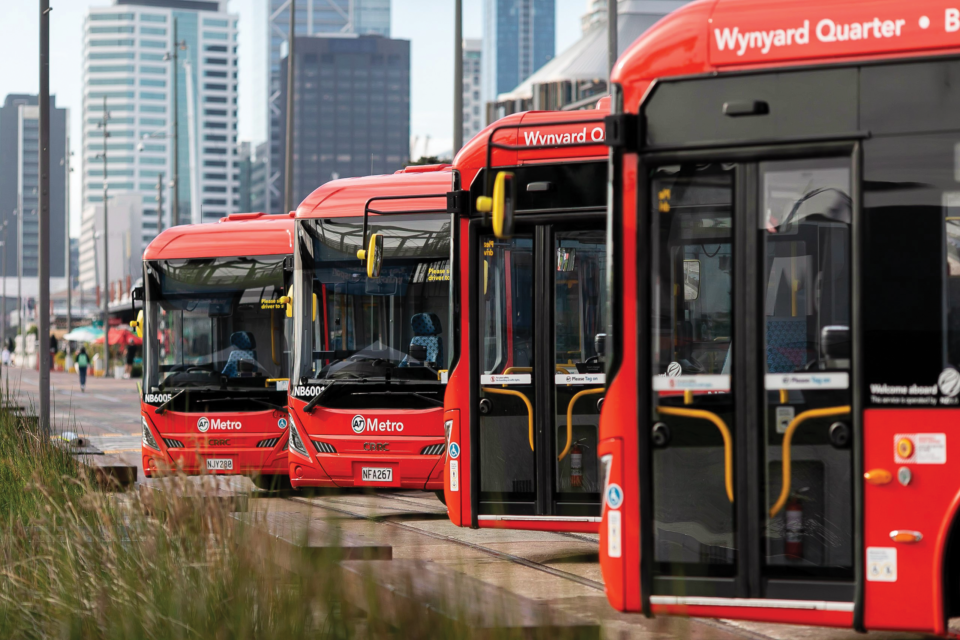By Alan Titchall.
I filled out a council transport survey last month. It asked me to pick a recent self-drive journey and, through drop down options, explain the reason, time it took and estimated cost in terms of vehicle fuel and annual overheads. It then asked me to estimate the time and cost it may have taken by public transport before flipping up a route on a map with estimated time and costs that, unsurprisingly, were cheaper than one’s own transport. Hypothetically, at least, but certainly not as convenient.
The drop-down options were too limited to explain the purpose of my trip and the circumstances around it. And this is often a failure of council transport attitudes that have a singular focus on congestion and emissions. My journey involved driving with my wife from our home in the inner city to her elderly mother’s house in the thick bush of Titirangi in Auckland’s Western suburbs on a Sunday to make lunch for extended family members. It involved a boot-load of prepared foods and a request to stop off at a supermarket to buy supplies. The trip distance was around 18 kilometres through easy traffic, and took 25 minutes.
The council’s survey came up with an alternative two-service bus route that theoretically took 53 minutes. However, we would have had to walk half a kilometre to catch the first of two services on one of Auckland’s numerous rainy days where it rains on average 186 days a year, or over half the year. We would have had to carry between us a roasting dish with an uncooked lamb shoulder and about 2.5 kilos of raw vegetables, one bottle of wine and a bottle of gin to top up my Mother-in-Law’s booze cabinet. After arriving at our destination it would have been a 200 metre walk down a very steep driveway covered in slimy leaves this time of the year. After our meal we would have to reclimb the driveway with our empty pan and wait for a bus on top of a dead-end road. I say ‘wait’ loosely as there is no guarantee the bus will be on time on a weekend day or arrive at all.
Private vehicle use popularised over the past century for a very simple reason – convenient transport of people and goods. Even the smallest vehicles (and all EVs) have a boot for a good reason. And boot space is important to us Kiwis.
If it can’t fit the kid’s sports gear plus a 40 litre bag of potting mix from Kings Plant Barn, it isn’t doing its job. Yet, I have yet to see a council transport statement that recognises the fact that herding kids around is painful enough in your own vehicle without herding them onto a bus, or that school drop-off and pick-ups make up a big percentage of urban congestion. Nor do they acknowledge the fact our country’s geography is very crumpled, and our climate wet and windy. In Auckland the wetter (than normal) season lasts over five months, from May to mid-October, with a 30 percent chance of a given day being wet. The windier (than normal) part of the year lasts for almost seven months, from 11 May to
5 December, with average wind speeds of more than 22.5 kilometres per hour. And, if the climate change doomsayers are right, it will get worse.
Which begs the question – why are the likes of Auckland Transport, and other councils, obsessed with push-biking (cycling) and forcing us into far less convenient public transport? At their most functional, cycle lanes are ‘recreational’ for the fit and healthy, and has anyone surveyed how many Aucklanders are fit enough to manage a pushbike in hilly terrain in fickle weather and even ficklier driving standards?
As for reducing transport emissions; we must get things into perspective. How do they rate on a global level and, if we are serious about it, why haven’t we ever put emission standards into our vehicle warrants, or reduced the age of the country’s motor fleet? Twenty two years ago, the average age of our vehicle fleet was close to 12 years. By 2020 that was over 14 years, compared with 7.5 years in Japan and 10.4 in Australia.
As for expensive EVs: they feature the same amount of steel, glass, plastic, oil and rubber, plus a lot of mined precious metals. They also take up as much space on the road and, as they are heavy, wear road surfaces out quicker.
But at least you can carry a 40 litre bag of potting mix in the boot. LG



